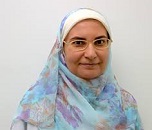
Enas Attia
Queen Medical Center, Qatar
Title: Characteristics of anaphylactic cases presenting to a day-care medical center in Qatar
Biography
Biography: Enas Attia
Abstract
Anaphylaxis is a potentially life-threatening condition. We have aimed to characterize clinical profiles and triggers in patients with anaphylaxis who presented at the Queen Medical Center, Doha during December 2014 to May 2016. 38 patients (14 males and 24 females) were evaluated including four children. Among the patients, 10 (26.3%) were Qatari and 28 (73.7%) were non-Qatari [17 (44.7%) Arabs, 7 (18.4%) Caucasians and 4 (10.5%) Asians]. Drugs, were the causative agents in 18 (47.4%) of cases, foods in 11 (28.9%), insect stings in 7 (18.4%) and 2 (5.3%) were of unknown aetiology. The sites of clinical manifestations in order of frequency were cutaneous in 37 cases (97.4%), respiratory in 31 (81.6%), cardiovascular in 26 (68.4%) and gastrointestinal in 17 (44.7%). Among all reactions, 5 (13.2%) were fatal and 16 (42.1%) were life-threatening. The fatal reactions were in response to injection of drugs (pethidine, morphia, lidocaine and iron infusion) but unknown aetiology in one case. NSAIDs, iron infusion and seafoods were the most common triggers of severe reactions (3 of each). Of the 38 patients, 22 (57.9%) reported other co-existing allergic diseases with rhinoconjunctivitis the most common (11; 28.9% patients). Our findings implicate drugs as the major triggers of fatal and severe anaphylaxis in our patients followed by seafood. Our findings highlight the importance of anaphylaxis in Qatar and indicate the range of triggers for this serious condition.

